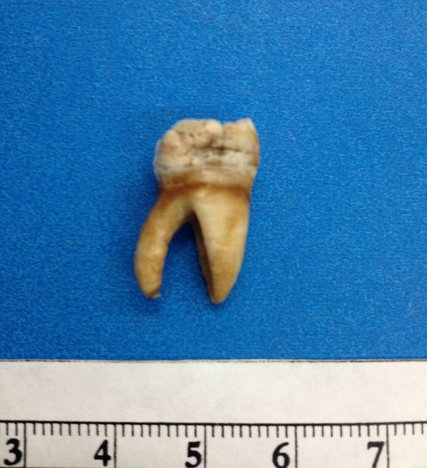You don’t just have teeth in your mouth: You have around 32 fossils that tell a microscopic history of your health. And scientists have found that even the old, discarded, not-so-pearly whites of people that lived hundreds of years ago tell a story about them, too.
According to a paper published Monday in The Journal of Archaeological Science, the researchers discovered a permanent record of vitamin D deficiency in the microscopic structure of old teeth and shed new light on the daily challenges faced by people of the past.
When the body doesn’t get enough vitamin D from the sun or food, they found, teeth develop gaps or bubbles in dentin, the layer under enamel that makes up about 85 percent of a tooth’s structure. These abnormalities reveal stories not just about past environmental conditions or food availability, but about culture and society as well.
Throughout history and across the world, there have been epidemics of children with rickets, a disease characterized by bowed legs and deformed hips, caused in part by a lack of sunlight. Anthropologists have identified rickets outbreaks by examining skeletal remains in places at high latitudes with limited access to sunlight, like some in England, Canada or France. But the vast majority of children who had rickets will outgrow it. That makes the dental record of the condition important because abnormalities within teeth don’t disappear with age, as evidence of bowed legs, for example, can, in adult bones. Understanding rickets outbreaks in the past can help in the study of children’s health today.
The researchers, led by Megan Brickley, an anthropologist at McMaster University in Hamilton, Ontario, examined the skeletal remains of six individuals who had been buried in the 18th and 19th centuries in cemeteries known to contain cases of rickets and individuals who had survived childhood vitamin D deficiencies. The team determined who likely had rickets from their bones and then analyzed their teeth, cutting each tooth into several transparent slices, thinner than a sheet of tissue paper, and examining them under microscopes.

They found that a 24-year-old man who had been buried in Quebec between 1771 and 1860 had suffered four bouts of rickets in his short life: twice before the age of 2, once again around the age of 6, and again, in a somewhat severe episode, around the age of 12. Evidence of this final episode in his third molar correlated with an abnormal curvature in his tailbone that only could have developed around the same time.
“We were able to see inside that tooth, what was housed in there, years ago,” said Dr. Brickley.
They reached this precision because teeth develop at different rates and leave behind concentric circles like tree rings over time. The researchers could look at the abnormalities within those layers to estimate occurrence and severity.
“You can’t get that info from a skeleton,” said Lori D’Ortenzio, a paleopathologist who worked on the study.
Originally seen on The New York Times.


Recent Comments